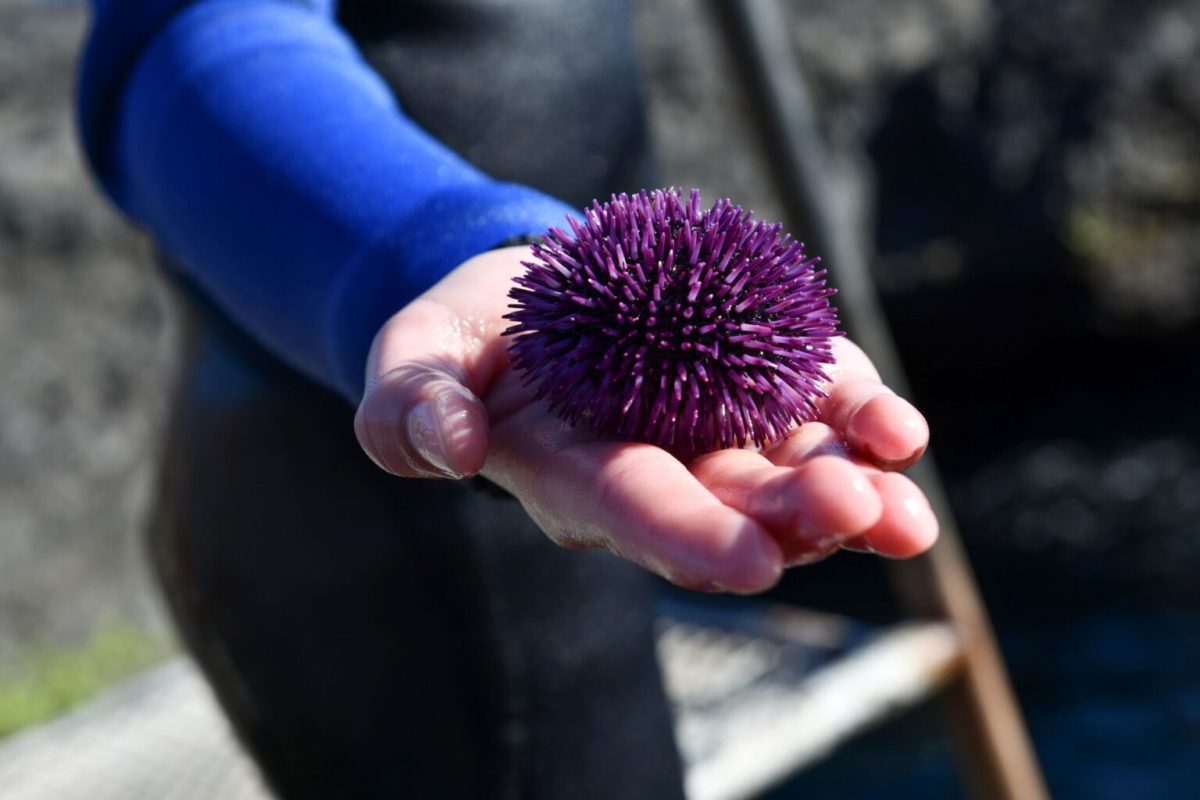The sea urchin — also known as uni in Japan— is an echinoderm that belong to the class Echinoidea. There are more than 950 species of sea urchins that inhabit the world’s oceans, but it is estimated only 18 are considered edible.
There are three main varieties of sea urchin currently harvested in Australia including purple, red and green. The purple sea urchin, or Heliocidaris erythrogramma, is mostly found along Sydney’s coastline and comprises the majority of commercial harvests across the country.
Growth and harvest
Sea urchins are primarily harvested along the south-east coast of Australia from New South Wales to Tasmania, with the peak season occurring in autumn. Red sea urchin is harvested in Southern Queensland and the South Coast of New South Wales and is at its best from late spring to early summer.
Sea urchins are predominantly harvested by hand by specially trained divers at the same time as other rock-dwelling species such as abalone. Divers use rake-like tools to pick up the animal from the ocean floor before they are placed in nets that are lifted to the surface by float bags. The product is usually processed on shore after being caught and is measured to ensure it meets the legal size threshold.
Appearance and flavour profile
Sea urchins come in a vast spectrum of colours from purple to green and can vary from 3cm to 10cm in size, with larger species reaching up to 36cm. Most varieties weigh in at around 450g, with urchins covered in long spines 1-3cm in length.
The seafood item is often described as an acquired taste and has an overtly briny flavour profile. Fresh sea urchins have a sweet, ocean flavour and leave an iron or zinc taste on the tongue. Sea urchins provide a savoury umami hit and have a rich, creamy texture.
Preparation and culinary applications
Urchins can be purchased live or pre-boxed. Chefs can split an urchin by using a knife to hit it or open it by placing two spoons inside the ‘mouth’, which should be removed and discarded. Each urchin contains five segments that should be scooped out and cleaned with a salt water solution. The roe can be stored in a salt water solution and should be consumed within two days if using raw or five days if it is being cooked.
Sea urchin is primarily consumed raw but can also be cooked in dishes such as chawanmushi, a Japanese steamed egg custard. It’s often wrapped in nori and served as nigiri or sashimi. In the Mediterranean, sea urchin is used in pasta sauces and is also eaten with bread.
Image credit: Reef Builders

